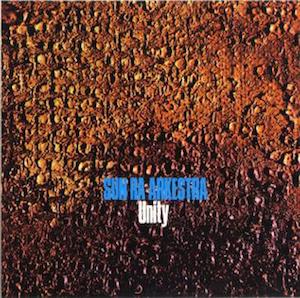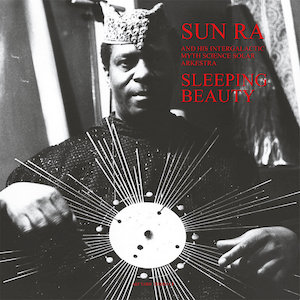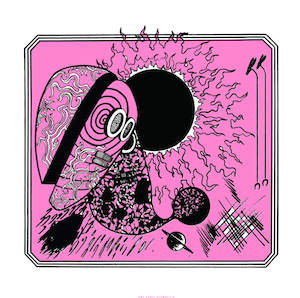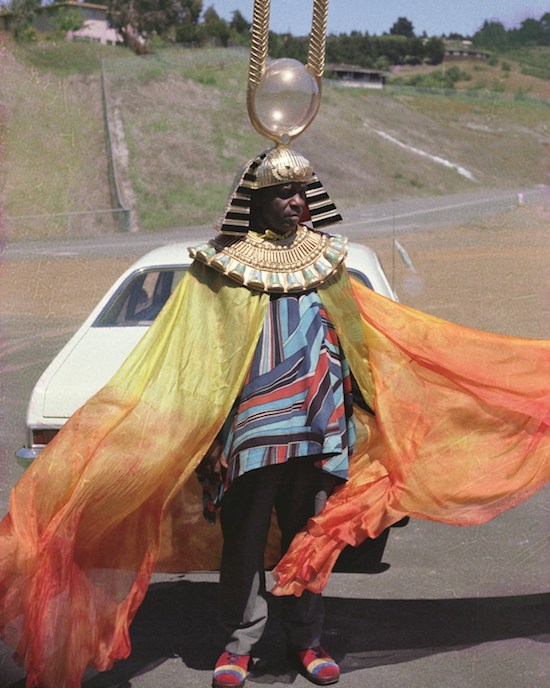For Danny Ray Thompson (Sun Ra Arkestra 1967-2020), who left the planet on 12 March 2020
Born Herman Poole Blount, on 22 May, 1914 in Birmingham, Alabama, Sun Ra (AKA Le Sony’r Ra) has one of the largest and most bewildering back catalogues in the history of recorded music. There is some uncertainty about how many albums Ra released. Most estimates are of between 100 and 150 and personally, I own around 70 of those.
Depending on which point of entry first beckons, the listener could find themselves in the midst of low-fi home recorded early electronica, carefully directed yet seeming freeform full blown large ensemble freak outs, retro futuristic chamber music, atonal experiments in new musical languages, wonderfully uplifting takes on big band swing and many combinations thereof.
When I interviewed Thurston Moore and John Sinclair about Sun Ra in 2014 for this site, Moore described opening up a new Sun Ra record and the fact of not knowing whether it would be a “fully wonderful, amazing ensemble recording” or something like sounded like Sun Ra doing the vacuuming, as one of the ‘joys’ of collecting his music.
For the uninitiated however, starting in a place that might discourage further investigation is a highly likely possibility. TQ’s own John Doran said to me once: “I didn’t listen to Sun Ra for years because someone played me Media Dreams and it put me off for decades.” That such a situation, as anyone who has experienced it and then later had a chance to recant will agree, might remain a permanent barrier to enjoying Sun Ra’s music is a potential tragedy that is best avoided with some helpful pointers.
For those wanting to jump straight in, Robert Mugge’s wonderful 1980 documentary, A Joyful Noise can be found on YouTube. From Sun Ra sitting outside the White House saying “They can’t have a White House without a Black House”, to James Jacson’s description of how they made the Lightning Wood Infinity Drum (from a lightning felled tree opposite the Sun Ra house in Philadelphia), this is a brilliant portrait of the band as it was then and an invaluably succinct look at his philosophy and the motivations of some of the many wonderful musicians who worked with him.
Anyone who has seen the Arkestra play during recent years, should keep a look out for a very young Knoel Scott in the scene of the band playing wildly on the rooftop near the beginning of the film. Watching John Coney’s 1974 Afrofuturist science-fiction film Space Is The Place is also highly recommended. The scene in which an out of work, white male NASA employee tries to impress Sun Ra with his knowledge of space in the hope of gaining employment, and fails dismally, is one of many highlights this low-budget, high concept classic. Sun Ra’s spaceship, returning to Earth after years away exploring the outer reaches, is “powered by music”, as one would rightly expect.
There are several books about Sun Ra, but John Szwed’s Space Is The Place: The Lives And Times Of Sun Ra is an indispensable depiction of an extraordinary life. A skilled pianist as a child, Sonny (as he was then nicknamed) was composing and sight reading music by the age of 11 or 12. By his mid-teens he was performing semi-professionally as a solo pianist, as well as working with a number of jazz and R&B groups. While he was attending college (or perhaps slightly later, while living in Chicago), he claimed he had a visionary experience during which he was taken to Saturn by otherwordly beings who impressed upon him the importance of his task, to speak through his music to the people of Earth.
Even allowing for some uncertainty as to the date of this experience, Sonny’s account of contact with extraterrestrial beings predated other accounts of alien abduction by many years. His early use of science-fiction imagery and his notion that space is the only place where the black race can find freedom, also anticipated George Clinton’s use of similar themes and was a huge source of inspiration for many other musicians and artists.
In the 1940s, Sonny worked as a pianist and arranger during Fletcher Henderson’s engagement at the Club DeLisa in Chicago. Blount had long admired Henderson, who was a pivotal figure in the development of big band jazz and swing. This kind of experience gave Sun Ra the unique perspective of being rooted in the historical aspects of jazz, whilst his later career saw him becoming an originator of many future styles of music. One of the first jazz performers to embrace the synthesizer, Sun Ra was sometimes given prototype electronic keyboards to use, like the RMI Rock-Si-Chord he used to great effect on Cosmos and Night Of The Purple Moon.
Whatever styles and instrumentation he used and whenever he voiced his ideas, Sun Ra was always in the vanguard of musical experimentation and nonconformist philosophical thought. With the Arkestra (at least until relatively recently with the onset of the worldwide coronavirus lockdown) still performing lengthy world tours under the guidance of the now 96-year-old Marshall Allen, and news announced recently of their first studio recording in 20 years, interest in Sun Ra’s music and vision seems at a higher level than ever. If you haven’t found your way into his work yet, then this is your chance.
Lanquidity, Strange Celestial Road & On Jupiter (1978 – 1979)
One of five albums Sun Ra released in 1978, Lanquidity is often cited, perhaps more than any other album, as being the one that first opened the door to appreciation of his music. A gorgeous-sounding studio recording of a 17-piece band, including two guitarists, Lanquidity exhibits elements of jazz-fusion, funk and R&B. ‘Where Pathways Meet’ has an unstoppable swagger to it, whilst ‘That’s How I Feel’ was sampled by a number of other artists, including Marcel Foley and Yatha Bhuta Jazz Combo. This album is a great place to begin for Sun Ra’s 70s period, but it’s not the only album worth recommending. 1979s Strange Celestial Road is easily equal to Lanquidity and at least as funky, played by a considerably larger ensemble of 28 musicians. ‘Say’ is a wonderfully propulsive track, with some brilliant trumpet playing from Michael Ray. Neither of those albums is quite the ‘Sun Ra goes disco’ that some critics have suggested, however. Perhaps the closest Ra’s music comes to that epithet is the track ‘UFO’, from 1979’s On Jupiter, with its thumping beat and cry of: “U-U-UFO/Take me where I wanna go.”
‘Nameless One No.2’ from Nuclear War (1982)

Recorded in 1982 for Columbia Records but rejected (most likely due to Sun Ra’s atypical use of the word ‘motherfucker’ in the title track), and finally released by Italy’s Y label, this is one of the most accessible albums in Sun Ra’s back catalogue. It’s ironic perhaps that this album, intended by Ra to have potential commercial viability, side-stepped any possibility of being so by the lyrics of its opening number. You have to admit, he had a point though when he intoned: “Nuclear war/ They’re talking about nuclear war/ It’s a motherfucker, don’t you know/ If they push that button /Your ass got to go.” ‘Retrospect’ drifts like a lovely, yet narcotising cloud – fallout of a more forgiving kind perhaps. Covers of Duke Ellington’s ‘Drop Me Off In Harlem’, Vincent Youmans’ ‘Sometimes I’m Happy’ and Charlie Chaplin’s ‘Smile’ (sung beautifully by Arkestra vocalist June Tyson) are all fine examples of Sun Ra at his most laid back. The album’s penultimate track, ‘Nameless One No.2’ is by far the high point in my estimation, however. Beginning quietly with ever-so-gentle drums, bass and the tinkling of Ra on organ, the track swiftly finds its footing and ascends, taking the listener with it in a gravity-defying exercise that is no less effective for its apparent simplicity. Put it on loud, close your eyes and dance on up through the ceiling as the triumphant denouement hits home.
Jazz In Silhouette (1959) & The Futuristic Sounds Of Sun Ra (1962)
Widely regarded as the essential recording from Sun Ra’s Chicago period, this album brilliantly encapsulates Ra’s interest in the bebop/ hard-bop style in classic tracks like ‘Enlightenment’, ‘Saturn’ and ‘Velvet’. The wild group improvisations and electronic experimentation of his later output may be completely absent here, but the incredibly uplifting effects of Ra’s swing-style tunes are difficult to deny. I was only lucky enough to see Sun Ra play once before he died, but I can fully attest that the mood elevating qualities of his music have continued to live on in the current incarnation of the Sun Ra Arkestra. Seeing them play over five consecutive nights is like undergoing intensive emotional therapy, raising one’s own vibration to a state of inner joy. It is these sort of tracks that, for me, most exemplify this aspect of Sun Ra’s music. The Futuristic Sounds Of Sun Ra, the first album to be recorded after the group relocated to New York, is another highly accessible release, albeit one with more of a post-bop and exotica edge than Silhouette. ‘Bassism’, ‘Jet Flight’ and ‘Tapestry From An Asteroid’ are all standout tracks, as is the odd but compelling ‘China Gates’, which features an eerie vocal turn from Ricky Murray.
Unity (1978) & Live At Montreux (1977)

Unity is a 16-piece band live recording from a 1977 performance at New York’s Storyville and widely regarded as one of the best live Sun Ra albums. Unfortunately it is difficult to purchase at a reasonable price. Of the 15 tracks, ten are jazz standards from the likes of Fletcher Henderson, Jelly Roll Morton, Duke Ellington and Miles Davis. These standards are delivered with such incredible passion and musicianship, with Sun Ra’s arrangements both paying tribute to their creators and attaining their own unique identities, that this record more than any other on this list, gives a feeling of what the Sun Ra Arkestra were (and still are on occasion) capable of projecting in a live environment. ‘How Am I To Know’ is a glorious call-and-response piece, attaining a kind of mantric like state by dint of repetition. Fletcher Henderson’s ‘Yeah Man’ is a wild, foot stomping number that reminds just how much this sort of music was the music-loving hedonist’s ecstatic sound of its time. Jelly Roll Morton’s ‘King Porter Stomp’ is even better, a delirious swirling dance of horns with John Gilmore’s glorious tenor sax solo taking off into the stratosphere. Live At Montreux is considerably easier to come by, brilliant in its own right and also has video footage from the concert available to view online. The version of Billy Strayhorn’s ‘Take The A Train’, with Ra’s extended piano introduction teasing the audience by including snippets of its melody in amongst a thrillingly chaotic storm of notes, is a perfect example of how to take a standard and still make it a unique statement of an individual musician’s intent (and that’s before we even get to John Gilmore’s blistering, transcendent solo).
Angels And Demons At Play (1965) & The Nubians Of Plutonia (1966)
Put together from two different sessions four years apart (1956 and 1960), the first four tracks of Angels And Demons are a fine example of Sun Ra’s incorporation of exotica stylings as he moved away from hard bop. ‘Tiny Pyramids’ is a subtle but beautiful piece that sounds like a ritualistic procession played loosely as street music. ‘Angels And Demons At Play’ is a Sun Ra classic that has long remained in the repertoire of the touring Arkestra. ‘Urnack’ and ‘Medicine For Nightmare’ hark back to the first Arkestra session. The two sides of the album could be seen as uneven, or a brilliant contrasting of two different styles, depending on your point of view. The Nubians Of Plutonia, or The Lady With The Golden Stockings as it was originally called, is twinned with Angels on the CD release. Opener, ‘Plutonian Nights’, is a supremely groovy big band number with strutting baritone sax and ‘Watusa’ has African sounding horns built around a circular piano riff.
Sleeping Beauty (1979)

Peter Dennett’s Art Yard label deserves special mention for bringing rare Sun Ra recordings to the attention of a wider public in especially beautiful vinyl editions, of which this is one of the very best. Recorded at New York’s Variety Recording Studios (sessions that also spawned the material for Strange Celestial Road and On Jupiter), this is one of the most effortlessly chilled out of all Sun Ra albums. ‘Door Of The Cosmos’ is funky but still laid back, but it’s the title track that’s the real draw here. ‘Sleeping Beauty’ may well be the most enchanting and uplifting track Sun Ra ever recorded. Despite the presence of a 28-strong Arkestra, the track doesn’t feel at all crowded and in fact seems to breathe as if a light summer breeze is gently moving through its gauzy layers of instrumentation, whilst June Tyson and Rhoda Blount gently chant: “We want to speak of black beauty to you.” John Gilmore, who was greatly admired by John Coltrane, is on especially brilliant form here.
Disco 3000 (1978)

Recorded live in Milan in 1978, and released in an expanded 12-track CD version by Art Yard that captures the concert in its entirety, Disco 3000 is a wild set that documents Sun Ra’s electronic keyboard work in a smaller group, with John Gilmore, Michael Ray and Luqman Ali. The title track is one of Ra’s furthest ventures into outer space. An early drum machine pulses against Ra’s metallic sounding keyboard tones. A brief chant of ‘space is the place’ arises before being subsumed into the chaotic but thrilling interplay of electronic sounds and tenor sax and trumpet. This is a fantastic track that still sounds ahead of its time. ‘Sun Of The Cosmos’ is five minutes of Ra cutting loose on Moog Synth, before being joined by a squall of horns. ‘Dance Of The Cosmo Aliens’ vies with the album’s title track for sheer inventive brilliance. Mostly comprised of a subtle but accumulative electronic pulse for its first three minutes, a simple but lovely keyboard motif begins to appear and slowly assert itself alongside some very sparse drumming. By the track’s end, the motif comes fully to the fore, providing the attentive listener with a strong emotional response as if it were the final flourish of a stunning conjuring trick.
Night Of The Purple Moon (1970)
Another small group recording, this time with Sun Ra on Minimoog and Rock-Si-Chord, John Gilmore on tenor sax and percussion, Danny Davis on alto sax and clarinet and Stafford James on ‘electronic’ bass. Featuring one of the best album covers of all Sun Ra’s back catalogue, with Ra floating above the Great Sphinx Of Giza, a pyramid in the background, printed simply in purple against white, this is one of my personal favourites. Despite the presence of some particularly far out tracks, most of the material here is accessible as music verging on pop and instilled with a very specific sound not generally found on other Sun Ra recordings. A kind of space-age exotica perhaps, that presents a warm yet exploratory vibe that once accessed, begs to be listened to from start to finish. This music only occasionally bites, as it does in the incredible ‘A Birds Eye View Of A Man’s World’, a cubist jazz miniature which seems to belong more to the world of quantum uncertainty than any predictable, mechanistic universe, with Ra’s fragmented keyboard motif thrillingly popping in and out of existence.
Discipline 27-II (1972) & Astro Black (1973)
Recorded in 1972 during the same sessions that resulted in the Space Is The Place LP, with a large line up that included 17 musicians and four ‘space ethnic voice’ vocalists, this is easily the equal of its more famous twin. Opener ‘Pan Afro’ sets a high tone for the tunes that follow. A catchy cycle of interlocking horn riffs give way to more glorious sax from John Gilmore interwoven with Ra’s subtle but driving piano figure. ‘Discipline 8’ is a little more sinister and atonal, whilst the longest track, ‘Discipline 27-II’ stretches out over 24 minutes liberally seasoned with June Tyson and Sun Ra’s call and response chants. ‘Neptune’, with its infectious chant of “Have you heard the latest news from Neptune, Neptune?” and mellow but extremely groovy baritone sax is the real highlight though. Recorded in the quadrophonic format, Astro Black was the first Sun Ra album to be released on ABC’s Impulse jazz imprint. The opening title track, with its deeply resonating horns, Ronnie Boykins’ insistent bass and June Tyson’s incredible vocal delivery of Sun Ra’s poetry, is absolutely essential. His words sound like a mission statement or clarion call: “Astro black mythology/ Astro timeless immortality/ Astro thought in mystic sound/ Astro black of outer space/ Astro natural of darkness stars/ Astro reach beyond the stars/ Out to endless endlessness/ Astro black American.”
My Brother the Wind Vol I (1970) & Vol II (1971)
Recorded in 1969, Volume I is one of several albums featuring Ra’s early use of the Moog synthesiser. Of the two volumes, this is by far the most experimental and as such, is not recommended as a first exposure to his music. It does contain some fascinating material however, including the weirdly amorphous groove of ‘The Perfect Man’ and the 17-minute, Sun Ra takes off into outer space, pulse and throb of ‘Space Probe’. You might not want to play this one often, but as an early electronica freak out that gazes fully into the infinite, it takes some beating. Side one of Volume II is considerably more accessible. Still a favourite of the currently touring Arkestra, ‘Somebody Else’s World’ is a lovely tune based around June Tyson’s passionate vocal proclaiming the value of different perspectives: “Somebody else’s idea of things to come/ Need not be the only way to vision the future.” ‘Walking On The Moon’ (“If you wake up now, it won’t be too soon”) is another timeless song expressing classic Sun Ra sentiment. Instrumental, ‘Somewhere Else’, is another high point. Side two, it should be warned, shares more in common with Volume I dominated as it is by Sun Ra’s Moog experiments. One can only imagine the reaction of the neophyte listener who, quite enjoying the first side of the album, turns over the disc only to discover a full-on oscillating assault.
The majority of these releases can be found on Sun Ra’s bandcamp page. With the Arkestra unable to tour at present due to Covid-19, please offer your support by purchasing any albums that truly move you


